Dateline – October 28, 2013
I mention Old Alton Bridge frequently on this website. This bridge spans Hickory Creek in a remote part of Denton County and is surrounded by Army Corps of Engineers land adjacent to Lewisville Lake.
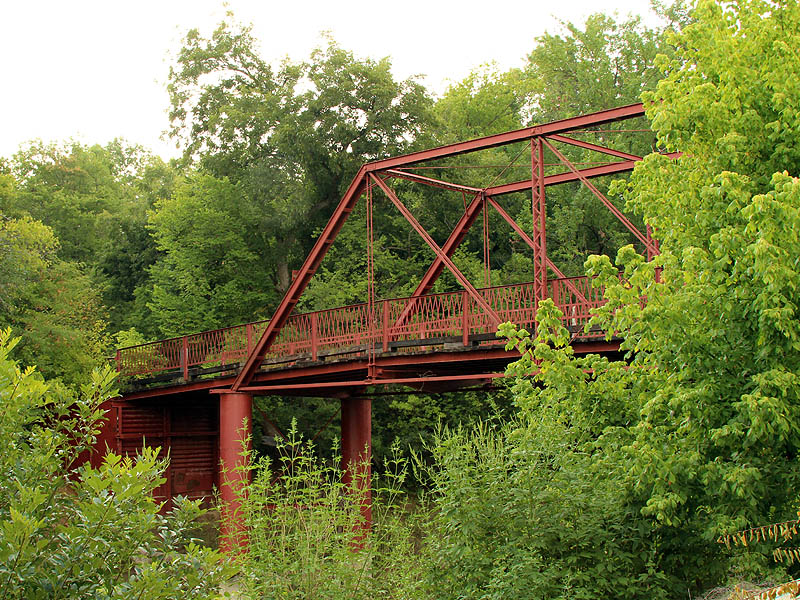
The wilderness that follows Hickory Creek into Lewisville Lake is a great place to observe wildlife. Most every kind of animal that can be seen in the Dallas/Fort Worth Area can be found in these woods, and Old Alton Bridge is a great place to stage an expedition.
The bridge is also a handy point of reference which is why I mention it so often. But there is much more to this old bridge than just its proximity to various trailheads. The bridge has a mysterious history and a set of macabre legends attached to it that need to be told. Old Alton Bridge is the name I use for the bridge these day, but when I was younger I knew it by a different name. Back then we called it Goatman’s Bridge.
I must have been around eleven or twelve years old when I first heard about Goatman’s Bridge. I was told vague and enigmatic stories about dense woods, a lonely dirt road running through a tunnel of trees, and an old haunted bridge. These dark tales were accompanied by rumors of satanic rituals, burning crosses, and the Klu Klux Klan that made the place sound mysterious, foreboding, and dangerous. Yarns about the ghost of a marauding Goatman were irresistible. I was instantly fascinated.
The legend of the Goatman takes many forms. Like all folktales the details vary depending upon the story teller, but all of the narratives follow the same vein.
The stories usually begin in post Civil War Texas. Legend has it that there was a freedman living near Old Alton Bridge who made his living raising goats. Over the years this farmer developed a reputation as an honest and reliable businessman, and he was able to carve out a decent livelihood for himself and his family.
But this was also a time when the Klu Klux Klan still retained power and influence in the shadowy corners of North Texas, and one malevolent and moonless night they targeted the goat farmer.
With a fiery cross burning in his front yard, the goat farmer was dragged from his home by the Klansmen and taken to Old Alton Bridge to be tortured and lynched. At the bridge a noose was slipped around his neck and the farmer was strung up on the superstructure. His mangled body was left to dangle over the road.
The Klansmen were not finished though. They had more evil to commit that fateful evening. Leaving the bridge the group of depraved desperados returned to the farmer’s cabin and tortured and killed his wife. His homestead was set on fire with his children trapped inside and left to die in the blaze.

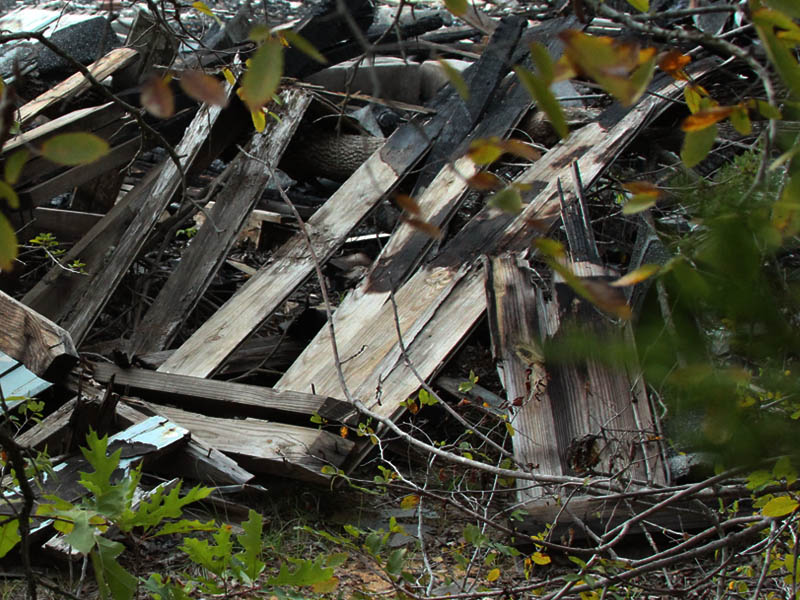
As the Klansmen rode away their exit took them again over Old Alton Bridge. There they were aghast to discover that the rope had been severed and the farmer’s body was gone. A thorough reconnaissance did not turn up the body.
Ever since the tortured soul of the goat farmer has haunted the dank creek bed under Old Alton Bridge in the form of a phantasm which is half man and half goat.

Today it is said that if you visit the bridge after midnight on a moonless night the Goatman will appear on the bridge to prevent your passage. After all these years, and far to late to do any good, the ghost of the goat farmer is still compelled to try and protect his home and family.
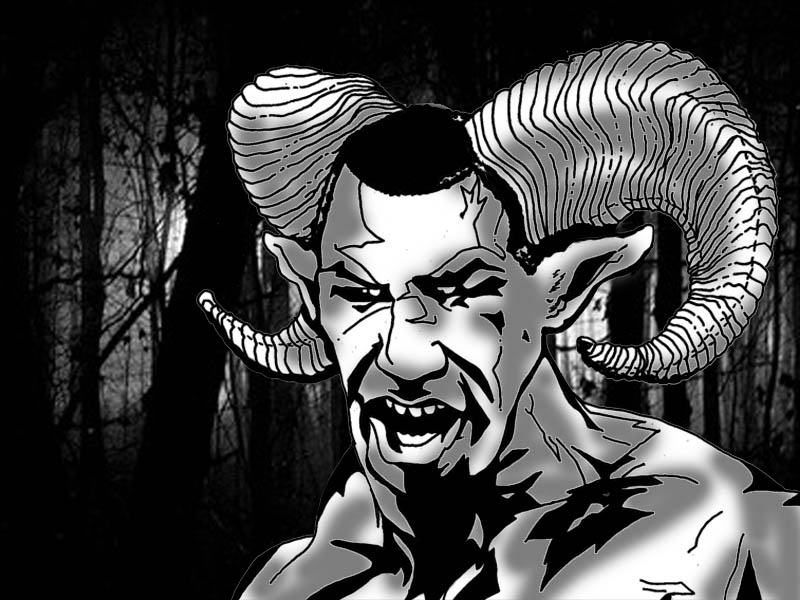
Here is a short video with another retelling of the Goatman legend:
It wasn’t until I in high school that I was able to get out to see Goatman’s Bridge with my own eyes. On my first visit I discovered the place was everything I heard it was. This part of Denton County was still very remote at the time. A long dirt road twisting and turning under a dark canopy of trees was the only way in or out.
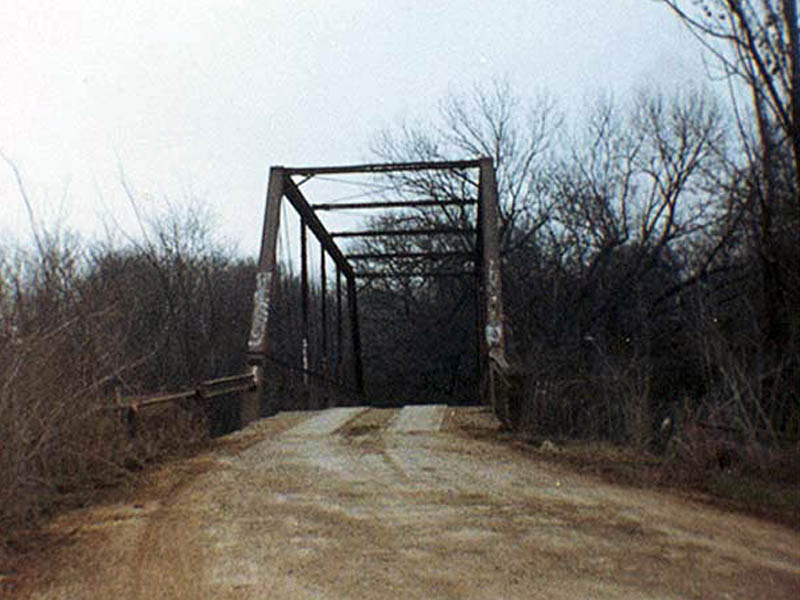
The rusty old bridge sat precariously over Hickory Creek looking as if it were only barely strong enough to support the single lane of traffic it was designed to accommodate. Dense dark bottomland forests follow the creek away from either side of the bridge. It was plain to see why people believed this place was haunted. It was easy to get creeped out here—even in the middle of the day.
I spent many afternoons out there exploring the woods and learning about the outdoors. But when I went off to college my time and interest for such pursuits largely evaporated. After school I began a career, got married, and started a family. It would be nearly two decades before I paid Goatman’s Bridge another visit.
A lot has changed in the intervening years. Old Alton Bridge no longer handles vehicular traffic. A new modern concrete bridge does that duty. The roads leading in are all paved now. Bedroom communities have sprung up all around, eroding the remoteness.
The surrounding forest is now a nature park, criss-crossed with soft surface horse and hiking trails. The bridge itself was incorporated into this trail system shortly after the new concrete bridge was constructed in 2001. Things are not quite the same.
These days I find myself less interested in the paranormal aspect of Old Alton Bridge and more curious about its origins. It turns out that the story of Old Alton Bridge is not complete without including its place in Denton County history.
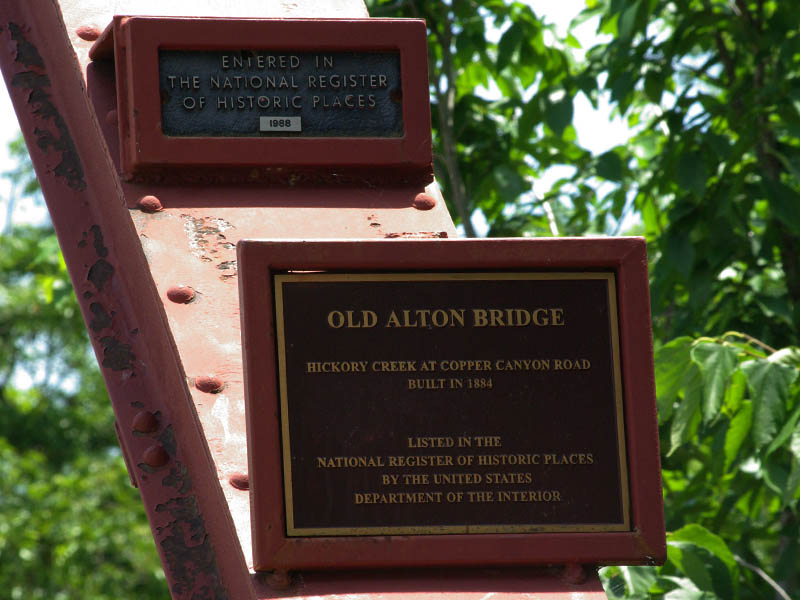
The history of Denton County began 1846 when it was created by the Texas legislature. The county seat was designated as Pinckneyville in a place said to be roughly a mile southeast of the current county seat. The exact location of the township remains unknown.
Pinckneyville never quite took root. There are no records of improvements or civic buildings. Court was said to be held—when necessary—under the branches of a gnarled old oak tree.
A few years later the site of the county seat was shifted to a new location. On February 4, 1848 the township of Alton was designated as the county seat in Denton County. The exact site of Alton is still subject to some speculation, but it is thought to have been close to present day Corinth.
Unfortunately, Alton did not fare much better than Pinckneyville. Again no public buildings were constructed, and soon there were calls to move the county seat to location closer to a reliable source of water.
In 1850 the county seat was move once again. This time a township was setup near Hickory Creek. This new location retained the name Alton and is the place referenced in the name “Old Alton Bridge.”
This location had more success than the others. Soon a ramshackle courthouse was constructed. Businesses of various kinds began to spring up. By 1856 the township was thriving.
But Old Alton was not centrally located enough for many of the counties residents, and in 1857 the county seat was moved for a final time. A vote was called and the county seat was relocated to Denton where it remains to this day.
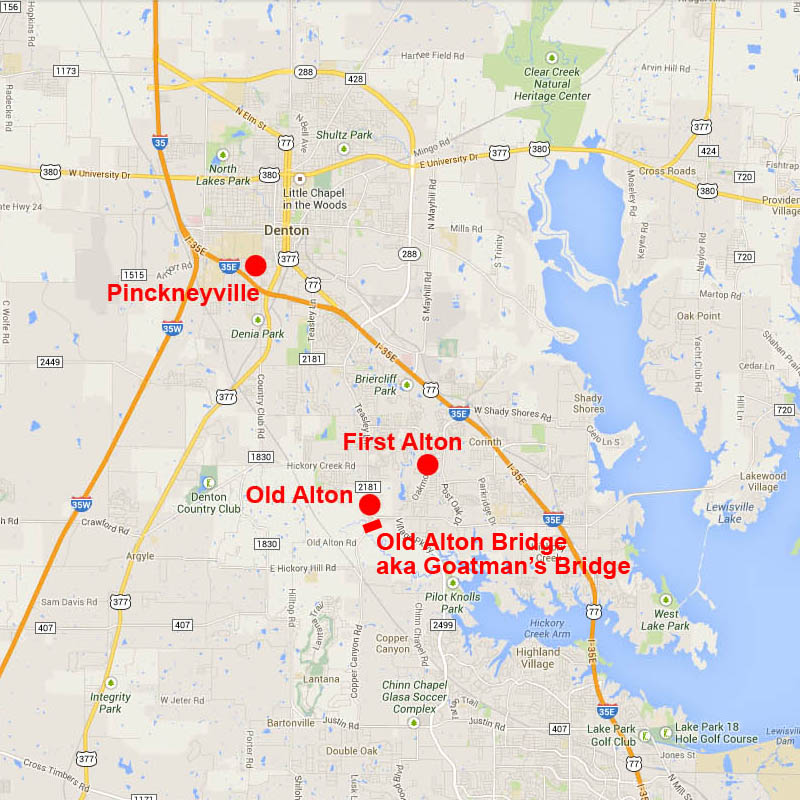
Old Alton Bridge was installed in 1884 with the intention of bringing more traffic to the small township of Alton just north of Hickory Creek. Alton was in decline and it was hoped that the bridge would revitalize the community that had at one time been the county seat. Unfortunately, that was not to be the case. Even though the bridge survives into the present, the town of Alton has long since disappeared.

Over the years and in spite of all the changes, two constants have remained—the bridge and the legend of the Goatman.



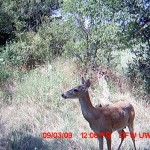
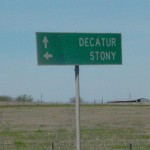



Great story about the goat man but sad if true
The story is all true. The facts may not be.
Thank for the history and story associated with the Old Alton Bridge. What was personally so catchy is that my first name is Alton, my family nickname is Hickory and I am related to some Dentons. Anyway, what a great piece, thank you!